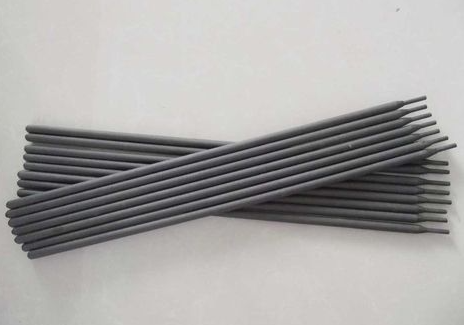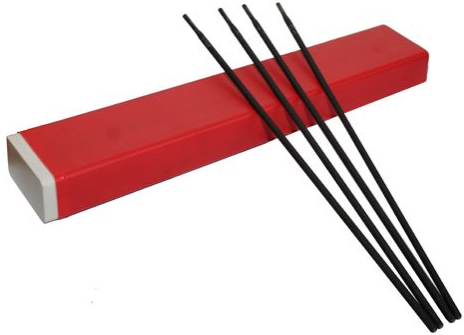Welding is a critical process in shipbuilding and repair, ensuring the structural integrity and safety of vessels. One of the essential components in welding is the electrode, which acts as a filler material to join metal parts together. Selecting the right welding electrode is crucial for achieving strong, durable welds. This guide provides an in-depth look at welding electrodes used on ships, including types, selection criteria, and best practices.
Types of Welding Electrodes
Welding electrodes come in various types, each suited for specific applications and materials. Understanding these types is the first step in choosing the right electrode for ship welding.
Consumable Electrodes: These electrodes melt during the welding process, adding filler material to the weld. Common types include stick (SMAW) electrodes and wire (GMAW) electrodes. Stick electrodes are versatile and widely used in shipbuilding for their ease of use and ability to weld in various positions. Wire electrodes, used in MIG welding, offer high productivity and are suitable for thin materials.
Non-Consumable Electrodes: Made of materials that do not melt during welding, such as tungsten, these electrodes are used in TIG (GTAW) welding. They provide precise control and are ideal for welding thin sections of stainless steel and non-ferrous metals.
Selection Criteria for Welding Electrodes
Choosing the right welding electrode depends on several factors, including the type of material being welded, the welding position, and the required mechanical properties of the weld. Here are key considerations:

Stick Electrodes
Material Compatibility
The electrode material must be compatible with the base metal. For example, low-carbon steel electrodes are suitable for welding mild steel, while stainless steel electrodes are used for stainless steel applications. Using the correct electrode prevents issues like cracking and ensures a strong bond.
Welding Position
Different electrodes are designed for specific welding positions, such as flat, horizontal, vertical, or overhead. Some electrodes, like E6010, are versatile and can be used in all positions, making them ideal for shipbuilding where various positions are encountered.
Mechanical Properties
Consider the required mechanical properties of the weld, such as tensile strength, ductility, and impact resistance. Electrodes are classified based on these properties. For instance, the E7018 electrode offers high tensile strength and is commonly used for critical shipbuilding applications.
Environmental Conditions
Shipbuilding often involves welding in challenging environments, including exposure to moisture and saltwater. Selecting electrodes with appropriate coatings, such as those resistant to moisture absorption, helps prevent defects like porosity and hydrogen cracking.

AWS A5.11 ENiCrFe-3
Best Practices for Using Welding Electrodes on Ships
Adhering to best practices ensures optimal performance and safety when using welding electrodes in shipbuilding.
Proper Storage and Handling
Store electrodes in a dry, temperature-controlled environment to prevent moisture absorption, which can lead to hydrogen-induced cracking. Use electrode ovens to maintain the recommended storage temperature, especially for low-hydrogen electrodes like E7018.
Pre-Weld Preparation
Clean the base metal thoroughly to remove any contaminants, such as oil, rust, and paint, which can affect weld quality. Proper surface preparation ensures better electrode performance and a stronger weld.
Welding Technique
Use the correct welding technique for the electrode type and position. For example, maintain the appropriate arc length and travel speed to avoid defects like undercutting and slag inclusion. Practice and training are crucial for developing the skills needed for high-quality welds.
Post-Weld Inspection
Conduct thorough inspections of welds to identify any defects or irregularities. Non-destructive testing methods, such as ultrasonic testing and radiography, are commonly used in shipbuilding to ensure weld integrity and safety.
FAQs: Welding Electrodes on Ships
Q: What is the most common welding electrode used in shipbuilding?
A: The E7018 low-hydrogen electrode is one of the most commonly used electrodes in shipbuilding due to its high tensile strength and versatility in various welding positions.
Q: Can I use the same electrode for different types of metals?
A: No, it is important to select electrodes that are compatible with the specific base metal being welded. Using the wrong electrode can lead to poor weld quality and potential structural issues.
Q: How do I prevent electrode moisture absorption?
A: Store electrodes in a dry, controlled environment and use electrode ovens to maintain the recommended storage temperature, especially for low-hydrogen electrodes.
Q: What are the consequences of using a damp electrode?
A: Using a damp electrode can introduce hydrogen into the weld, leading to hydrogen-induced cracking and compromising the weld’s integrity and strength.
In conclusion, selecting the right welding electrode and following best practices are crucial for achieving strong, durable welds in shipbuilding. By understanding the types of electrodes, selection criteria, and proper usage techniques, you can ensure the safety and structural integrity of your vessels.







